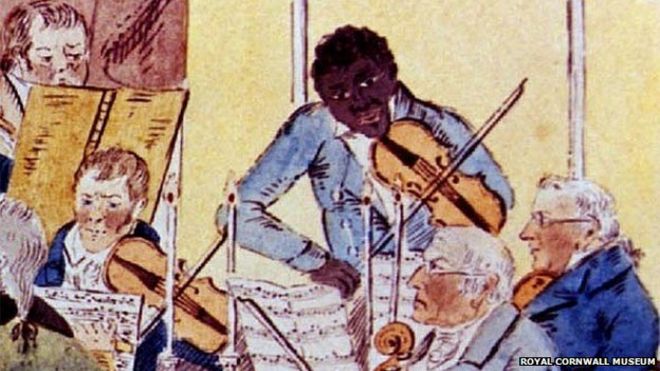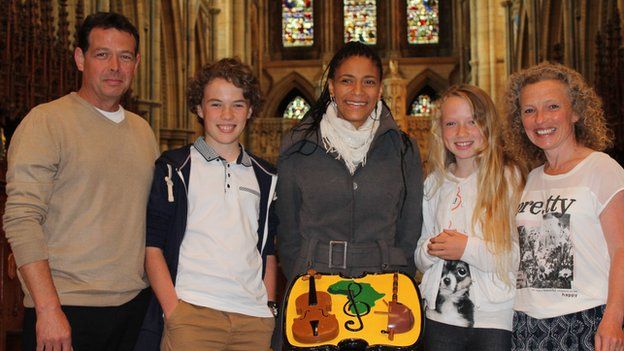Visualizing Racial Mixture and Movement: Music, Notation, Illustration
J19: The Journal of Nineteenth-Century Americanists
Volume 3, Number 1, Spring 2015
pages 146-155
DOI: 10.1353/jnc.2015.0009
Brigitte Fielder, Assistant Professor of English
University of Wisconsin, Madison
The archive of nineteenth-century visual culture abounds with illustrations of racial difference reflect anxieties about racial mixture and movement. Race extends beyond visual expression and detection, but racialized bodies have been continually represented by images meant to convey racial difference, often via racist caricatures. The piece I discuss here adds, to the depiction of racial difference, mixture and movement conveyed through the representation of sound, in written music (fig. 1). Layering illustrations of figures in dance atop the symbolic notation of the aural, the music conveys its narrative of race via musical rather than literary genres: the waltz and the march. In this brief essay I will begin to unpack this particular representation of racialized bodies as visualized in a remarkable, and remarkably little-known, piece of sheet music distributed by George P. Reed, a Boston music store owner and seller of musical instruments, instruction books, and sheet music during the 1830s and 1840s.
Racial representation has often been confined by the media used to depict its complexity—from language that describes race via metaphors of color to the technology of racial representation in black-and-white that obscures nondualistic racial gradation. Written music, like the written word, is a technology of representation. The visual representation of music and the visual representation of race are similar in that they are not mimetic but symbolic. Just as quarter and half notes stand in for certain pitches and durations that might be interpreted through variations such as instrumentation and style, the presence and absence of black ink represents racial difference that in reality is nuanced by gradations in complexion, historical contexts, and cultural resonances of racialization.
Music here implies the aural, but also the movement of dance; the waltz and the march produce bodies in motion. The movement of racialized bodies through geopolitical spaces and with relation to one another hints at race’s fluidity. In the two genres on this single sheet, we see what might be understood as different methodological frames for understanding their respective narratives of race. The waltz’s male and female pairing of partners suggests heterosexuality. The march denotes a different kind of movement, not simply interpersonal but movement through geopolitical spaces and in militaristic endeavors.
The limitations of the musical form for representing race correspond to other limitations of racial representation in metaphors of color, racialized value, and racial distinctions that forgo complexity in favor of legibility. The extent to which race becomes legible through musical notation is admittedly limited. This sheet music is, in many ways, difficult to read. The stick-figure drawings crowd the notes, making one wonder at the practicality of playing the musical annotation. In this respect, the sheet is poised to function less as legible musical notation and more as a visual showpiece. Notwithstanding its visuality, the flatness of stick-figure characters obscures the political import that is clearer in other racial/racist caricatures. Nevertheless, these juxtapositions of the movement of racialized bodies and the movement of music thematize relations of race within musical form, marking race as always in motion, unfixed, and progressing through a specific, readable generic narrative.
Amalgamation Waltz
In nineteenth-century America, the image of a racially integrated dance was a popular site for American anxieties about race relations. Illustrations of integrated dances appeared throughout the antebellum period, in Amalgamation Waltz from Edward Williams Clay’s 1839 “Practical Amalgamation” series of lithographs, his 1845 Amalgamation Polka, and the 1864 political caricature The Miscegenation Ball. The underlying movement of music composes a compelling backdrop for understanding popular depictions of and reactions to racial mixture in nineteenth-century America. Illustrations of dance, movement, and music signal the similarly fluid notions of race that permeated antebellum discourse. While Clay’s Amalgamation Waltz is emphatic in its illustrated pairings of black men and white women, the musical notation of Reed’s music literalizes these juxtapositions of racial integration within the music itself. The three-beat measure of the waltz is composed of stick-figure illustrations, mostly of pairings of black men and white…





